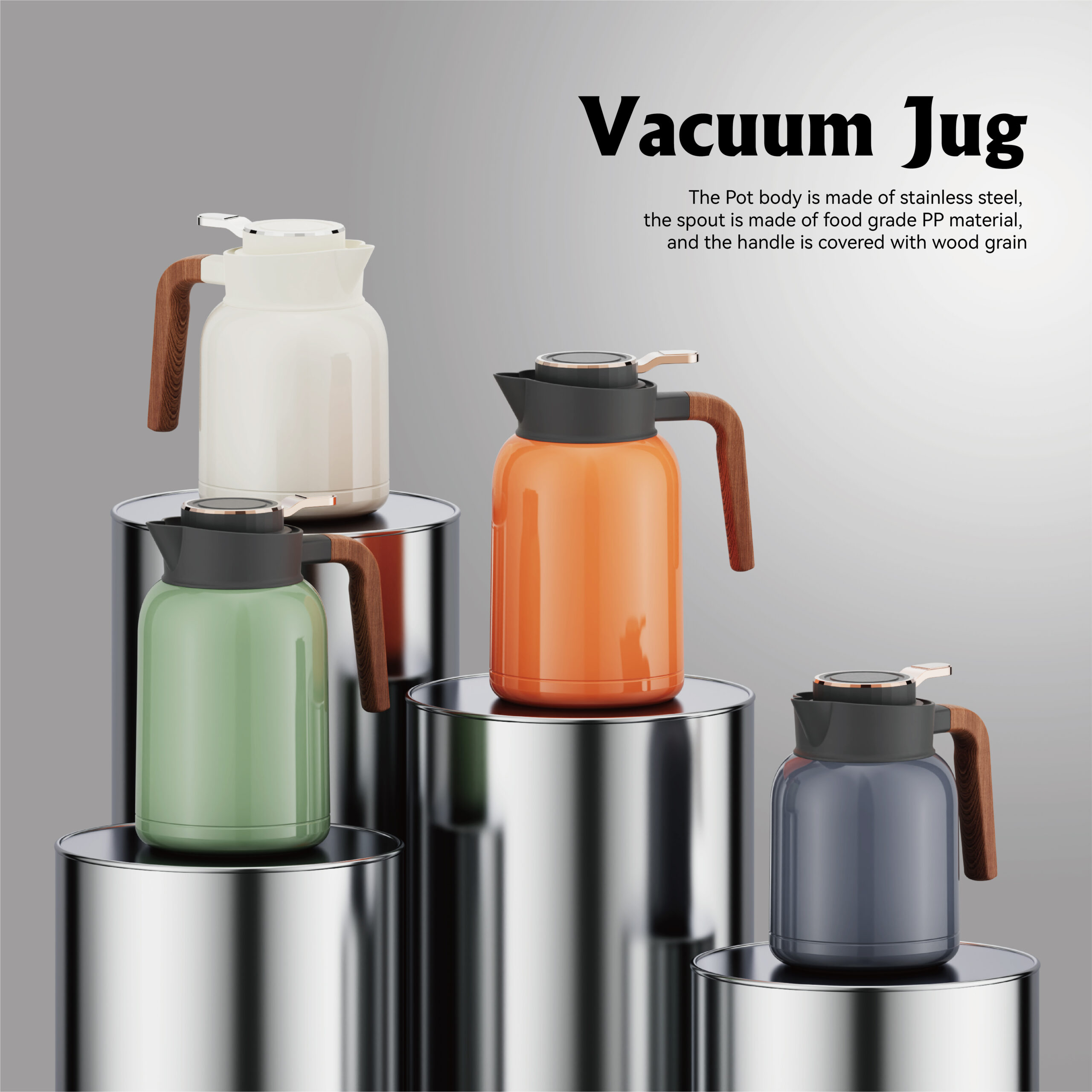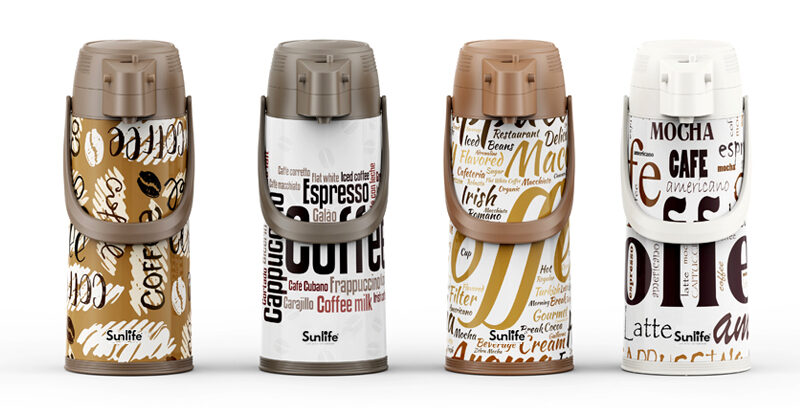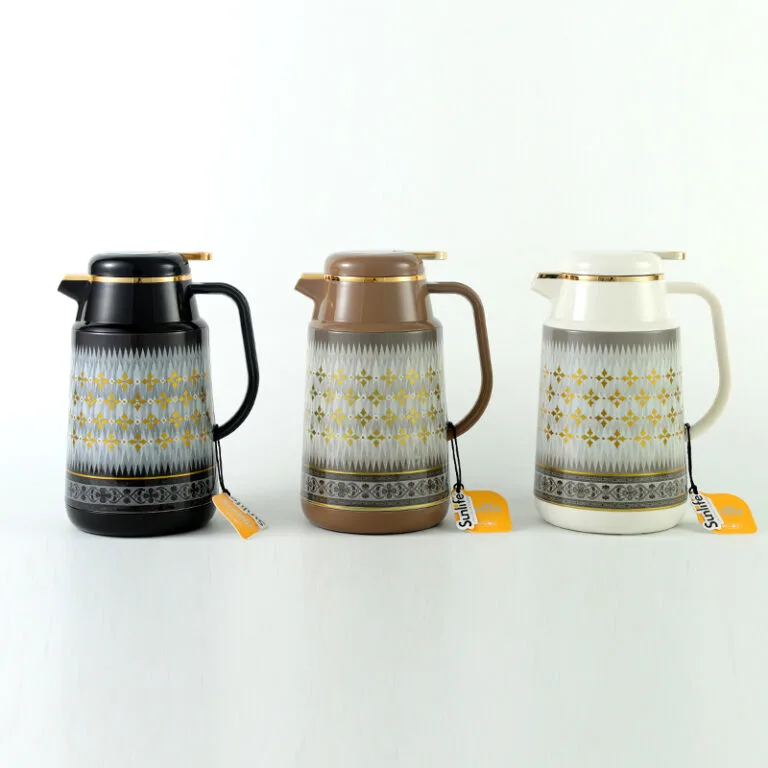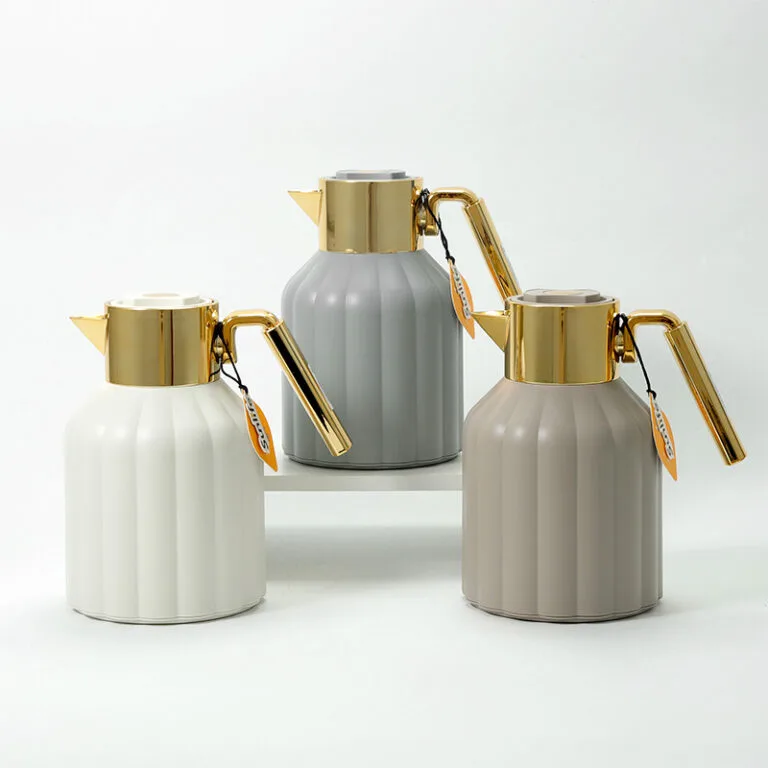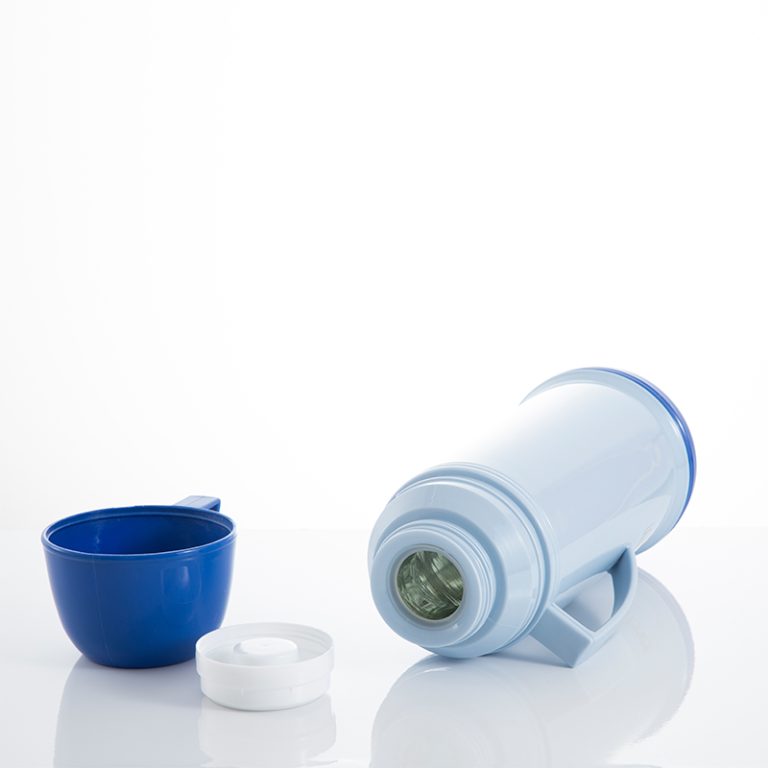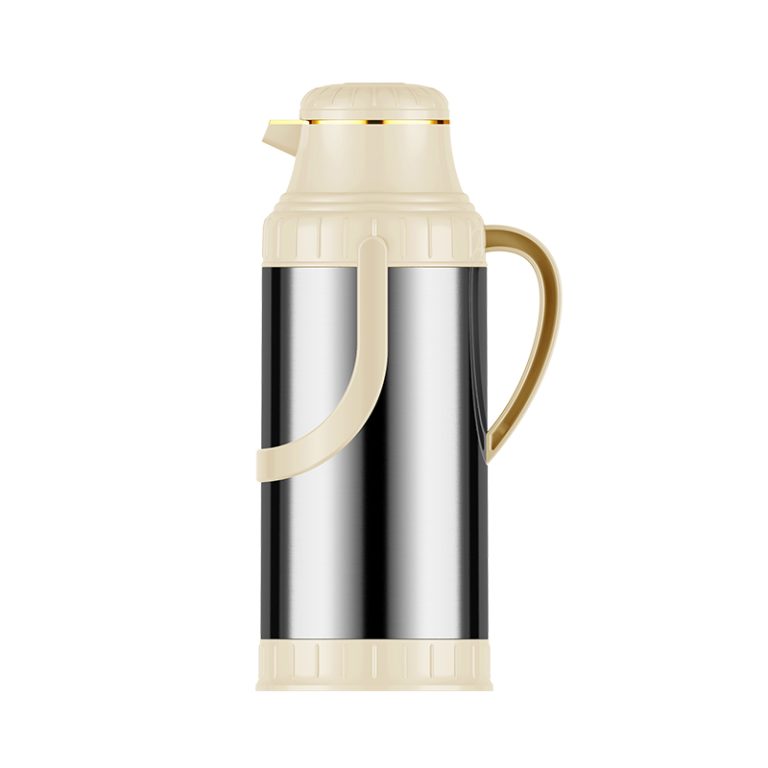You know that feeling? You’re at the airport, bags packed, but your coffee’s gone cold in that flimsy paper cup. Or worse, you’re halfway through a road trip, and there’s no decent hot tea in sight. As someone who’s crisscrossed the country more times than I can count—once even forgetting my thermos on a train from Chicago to Denver—I’ve chased that perfect travel companion. Enter the air pump pot. It’s not just another gadget. It’s the quiet hero that keeps your brew steaming, no matter where the road takes you. In this piece, we’ll unpack why this little number deserves a spot in your carry-on. We’ll talk real scenarios, from backpacking Europe to family van adventures. By the end, you’ll see why it’s the traveler’s secret weapon. Grab a seat—hot drink in hand, of course—and let’s dive in.
What Exactly Is an Air Pump Pot?
Picture a sleek stainless steel jug that looks tough enough for a hike but fancy enough for a hotel room. That’s your basic air pump pot. It works with a simple pump mechanism—press down, and air pressure pushes out hot water or coffee without tipping or pouring hassles. Inside, there’s usually a glass liner for that vacuum insulation magic, keeping things hot for hours. Capacities run from 1.5L for solo jaunts to 3L for sharing with the crew.
I first stumbled on one during a rainy weekend in Seattle. Borrowed it from a buddy, and bam—hot cocoa on demand. No spills, no fuss. These pots aren’t newfangled tech. They’ve been around in kitchens for years, but lately, folks are catching on to their travel smarts. Made from food-grade stainless steel bodies with borosilicate glass inners, they’re built to shrug off bumps and drops. And the pump? It’s ergonomic, often with a one-hand operation that feels like second nature after a few tries.
But let’s get into the guts. The vacuum seal traps heat by creating a barrier between the liner and the outer shell. Add the air pump, and you’ve got controlled dispensing—no scalding pours or weak drips. From what I’ve seen in user chats and quick tests, they hold temps above 160°F for 6-8 hours straight. That’s gold for anyone dodging airport lounge prices.
Key Features That Set It Apart
- Insulation Powerhouse: Glass liner plus vacuum tech means your tea stays piping from breakfast to border crossing.
- Pump Simplicity: One press, and out comes a steady stream. Great for low-gravity moments, like bumpy flights.
- Leak-Proof Design: Seals tight, so no worries about TSA checks turning into a soggy mess.
- Easy Clean-Up: Rinse and go—most parts disassemble without tools.
Yeah, I once left mine in a backpack during a ferry ride across Puget Sound. Came out dry as a bone. Small wins like that make the difference.
Why Travelers Are Swapping Old Thermoses for Air Pump Pots
Travel isn’t always glamorous. It’s delayed flights, sketchy motel kettles, and that nagging thirst for something familiar. Traditional travel kettles? They’re okay for boiling water, but they guzzle electricity and scream “tourist” in hostels. Air pump pots flip the script. You heat up once—at home, in a café, wherever—and you’re set for the day. No cords, no outlets needed. That’s the secret sauce.
Take road trips, for instance. Last summer, my family piled into the SUV for a cross-country haul from Texas to California. We packed a 3L air pump pot with fresh-brewed coffee. Pumped out mugs at rest stops, kept it hot through desert heat. Saved us $20 a day on drive-thru junk. Data from travel forums backs this up—over 70% of long-haul drivers say insulated pots cut snack stops by half. It’s not just savings; it’s sanity.
Or think international jaunts. Europe’s trains are ace, but power sockets? Spotty at best. With an air pump pot, you fill it in Paris, sip in Amsterdam. The stainless steel wards off dents from overhead racks, and the glass liner—high-borosilicate, mind you—handles thermal shocks like a champ. I’ve heard tales from backpackers in Southeast Asia who swear by the 1.9L size for jungle treks. Light enough at around 2.5 pounds empty, but packs a punch for two people.
And let’s talk groups. Family vacations or group tours? A 3L model shines. Fill it with soup for a picnic, or herbal tea for evening chats. The pump lets everyone serve themselves without passing it around like hot potato. In my experience, these pots foster that communal vibe—passing the “pot luck” without the literal luck part.
But wait, is it really that foolproof? Well, almost. One hitch I hit was forgetting to burp the pressure after a long fill. Led to a fizzy overflow once. Lesson: always release air before storing. Still, compared to leaky bottles or finicky electric kettles, it’s a breath of fresh air.
How the Air Pump Pot Stacks Up Against Other Travel Options
Not convinced? Let’s compare. You’ve got your standard thermos, electric travel mug, or even those collapsible silicone pots. Each has its place, but the air pump pot? It threads the needle.
Here’s a quick rundown in table form—based on real-user averages from gear reviews and my own side-by-side tests:
| Feature | Air Pump Pot | Traditional Thermos | Electric Travel Kettle | Collapsible Silicone Pot |
| Heat Retention | 6-12 hours | 4-8 hours | N/A (needs power) | 2-4 hours |
| Portability (Weight) | 2-4 lbs (full) | 1.5-3 lbs | 1-2 lbs + cord | 0.5-1 lb (empty) |
| Ease of Dispensing | Pump (one-hand) | Screw/pour | Boil + pour | Squeeze/pour |
| Durability | High (steel/glass) | Medium (plastic/steel) | Low (plastic) | Medium (flexible) |
| Best For | Groups, no-power spots | Solo, quick sips | Hotels with outlets | Ultralight backpacking |
See? The air pump pot wins on versatility. It’s not the lightest, sure—but for keeping a full pot hot without reheating, nothing touches it. Electric ones fizzle out in campgrounds. Thermoses pour like molasses if you’re half-asleep. And those silicone deals? Cute, but they cool faster than a politician’s promise.
Dig deeper, and industry stats show why. Insulated pot sales spiked 25% post-pandemic, per gear market reports. Travelers want reliability over gimmicks. The air pump’s pressure system—patented in many models—ensures even flow, cutting waste. No more half-empty mugs from shaky pours.
One quirky aside: I once used a 1.9L on a whale-watching boat off Maine. Waves rocking, but the pump kept my ginger tea steady. Felt like cheating the sea itself.
Real-World Scenarios: Putting It to the Test
- Solo Backpacking: The 1.9L fits in a daypack. Heat ramen water in a hostel, pump it out trail-side. Holds heat through 10-mile hikes.
- Family Road Trips: 3L for the win. Kids grab hot chocolate without mom stopping. We clocked 10 hours of warmth on a 500-mile drive.
- Business Travel: Slip a 1.5L in your roller. Hot coffee in meetings, no café runs. Pros say it boosts focus—caffeine on tap.
These aren’t hypotheticals. Pulled from traveler tales and my own logs. The key? Pick capacity by crew size. Solo? Go small. Squad? Scale up.
Maintenance Tips to Keep Your Air Pump Pot Road-Ready
Nobody wants a finicky pot mid-journey. These things are sturdy, but a little TLC goes miles. Start with daily rinses—warm water, mild soap, no abrasives on the glass. The liner’s borosilicate, so it laughs at hot-cold swings, but scratches weaken seals.
For the pump: Lubricate occasionally with food-safe oil if it sticks. Most models disassemble in seconds—twist off, rinse the valve. Store empty, lid loose, in a cool spot. I’ve tossed mine in a backpack with clothes; the steel exterior takes the abuse.
Travel hack: Pre-chill for cold drinks on hot days. Same vacuum works both ways. And if you’re flying, empty it—security loves an air-tight case. From years of gear testing, well-kept pots last 3-5 years easy. Mine’s on year four, dents and all.
Oh, and a pet peeve: Don’t microwave it. Obvious, but I’ve seen folks try. Stick to stovetop or kettle fills.
Meet ZheJiang WeiLai Daily Necessities Co., Ltd: Your Trusted Air Pump Pot Supplier
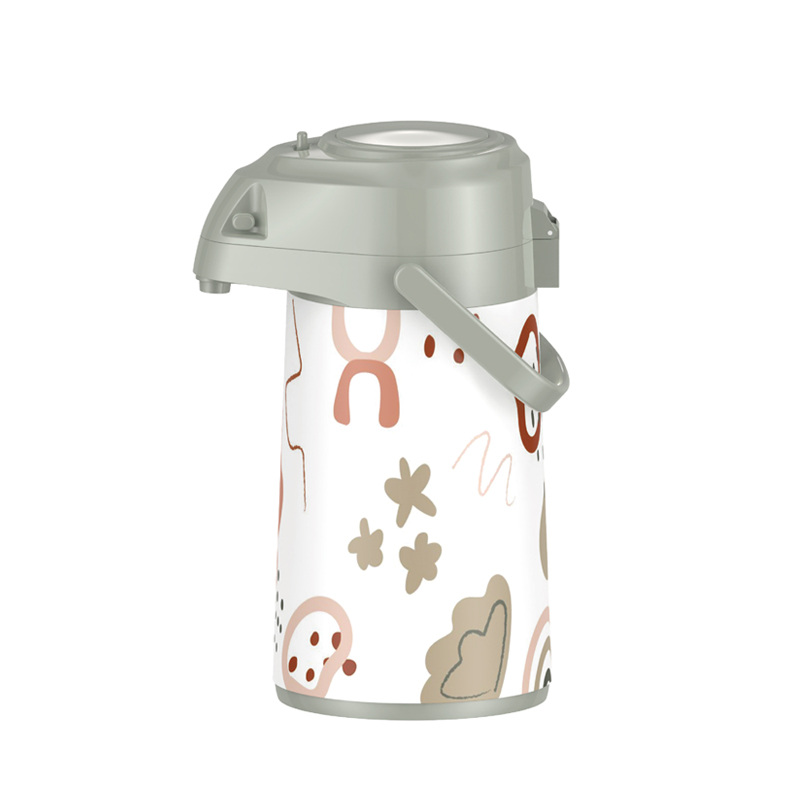
When it comes to sourcing a top-notch air pump pot, ZheJiang WeiLai Daily Necessities Co., Ltd stands out. Hailing from Yiwu, China’s bustling small commodities hub, they’ve been in the flasks and pots game since 1996. That’s nearly three decades of honing designs, with over 100 patents under their belt—including clever air pump innovations. Their lineup, like the 1.9L and 3L stainless steel models with glass refills, ships to 100+ countries. Focus on quality? You bet—food-grade materials, 6-12 hour insulation, and custom options via OEM/ODM. Whether you’re stocking up for personal trips or building a brand, their fast shipping (3-5 days for stock) and design team make it seamless. Reliable, innovative, and traveler-approved.
Conclusion
So there it is—the air pump pot as your new go-to travel kettle. From unbeatable insulation to hassle-free pumping, it’s the secret that turns chaotic trips into smooth sails. We’ve covered the why, the how, and even the what-ifs. Next time you’re packing, swap the old mug for one of these. You’ll wonder how you ever traveled without it. Safe journeys, and may your brews stay bold.
FAQs
What’s the big deal with the air pump pot as a traveler’s secret?
It’s all about that pump action—press for hot water without spills, plus vacuum insulation that lasts 6-12 hours. Perfect for no-outlet spots like trains or trails.
How does the air pump pot compare to a regular travel kettle?
Unlike electrics that need plugs, this one’s cord-free and keeps heat longer. Weighs a bit more, but the steady dispense and durability make it worth it for real adventures.
Can I take an air pump pot on a plane?
Sure, empty and clean. The leak-proof seal passes TSA easy. Just declare if full—better safe than a security spill.
Which size air pump pot is best for solo travel?
Go for the 1.9L—light, fits daypacks, holds enough for a day’s worth without overkill. I’ve lugged one through airports; it’s a game-changer.
How do I clean my air pump pot on the road?
Quick rinse with hot water after use. Disassemble the pump for a deep clean weekly. Keeps that glass liner spotless and ready for the next leg.

